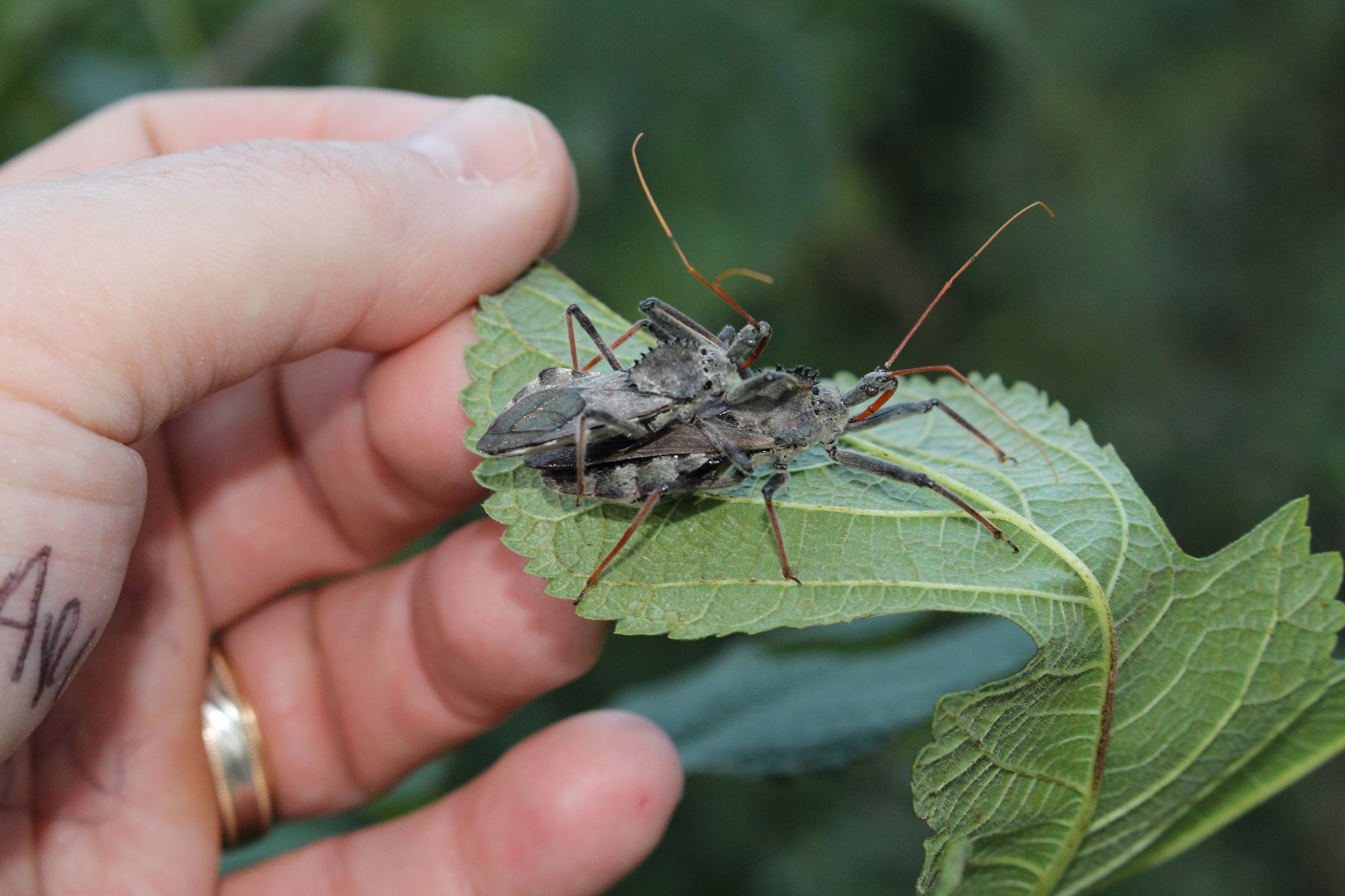by–Dr. Raymond Cloyd
If you have spent any time outdoors in the last month, you may have noticed a very distinct, grotesque looking insect on trees, shrubs, or near homes. This insect is the wheel bug (Arilus cristatus), which is common, and widely-distributed throughout Kansas and the USA. Wheel bugs, also referred to as assassin bugs, are predators that prey on insect pests. However, both the nymphs and adult can inflict a painful bite when handled by humans.
Adult wheel bugs are 1.0 to 1.25 inches long, robust with long legs and antennae, and have a stout beak and large eyes on a narrow head (Figure 1).
Figure 1: Wheel Bugs Mating Male on Top of Female.
Figure 2: Wheel Bugs with Crest or Wheel on Thorax.
They are dark-brown to gray in color. The adults possess a wheel or crest with 8 to 12 protruding teeth-like structures (tubercles) on the thorax that looks like a cogwheel (Figure 2). Wheel bugs have two long, slender antennae that are constantly moving or weaving around. Females are typically larger than males. Females lay eggs that resemble miniature brown bottles with white stoppers (Figure 3).
Figure 3: Wheel Bug Eggs.
The eggs are laid in clusters of 40 to 200, and are glued together and covered with gummy cement, which protects the eggs from weather extremes and natural enemies (e.g. parasitoids and predators). The egg clusters are primarily located on the trunk or branches of trees or shrubs. The eggs hatch into nymphs that are bright red in color with black markings. The nymphs do not have the wheel or crest. The life cycle, from egg to adult, may take 3 to 4 months to complete. Wheel bugs are active day and night. They are very shy and tend to hide under leaves. The wheel bug has one generation per year and overwinters as eggs.
Wheel bugs are voracious predators and feed on a wide-variety of insects, including caterpillars (Figure 4), beetles, true bugs, sawflies, and aphids. Unfortunately, wheel bugs will feed on beneficial insects such as ladybird beetles and honey bees.
Figure 4: Wheel Bug Ready to Attack Caterpillar.
The mouthparts are red-brown in color and resemble a tube or straw that is located underneath the head (Figure 5) and extends out when ready to “stab” prey. Wheel bugs paralyze prey with their saliva, which contains a toxic substance that immobilizes prey within 30 seconds. In addition to feeding on insects, wheel bugs are cannibalistic, and will feed on each other.
Figure 5: Wheel Bugs with Mouth Underneath Head.




I wonder if they do well in terrariums. I’d love to have a living specimen in my collection.